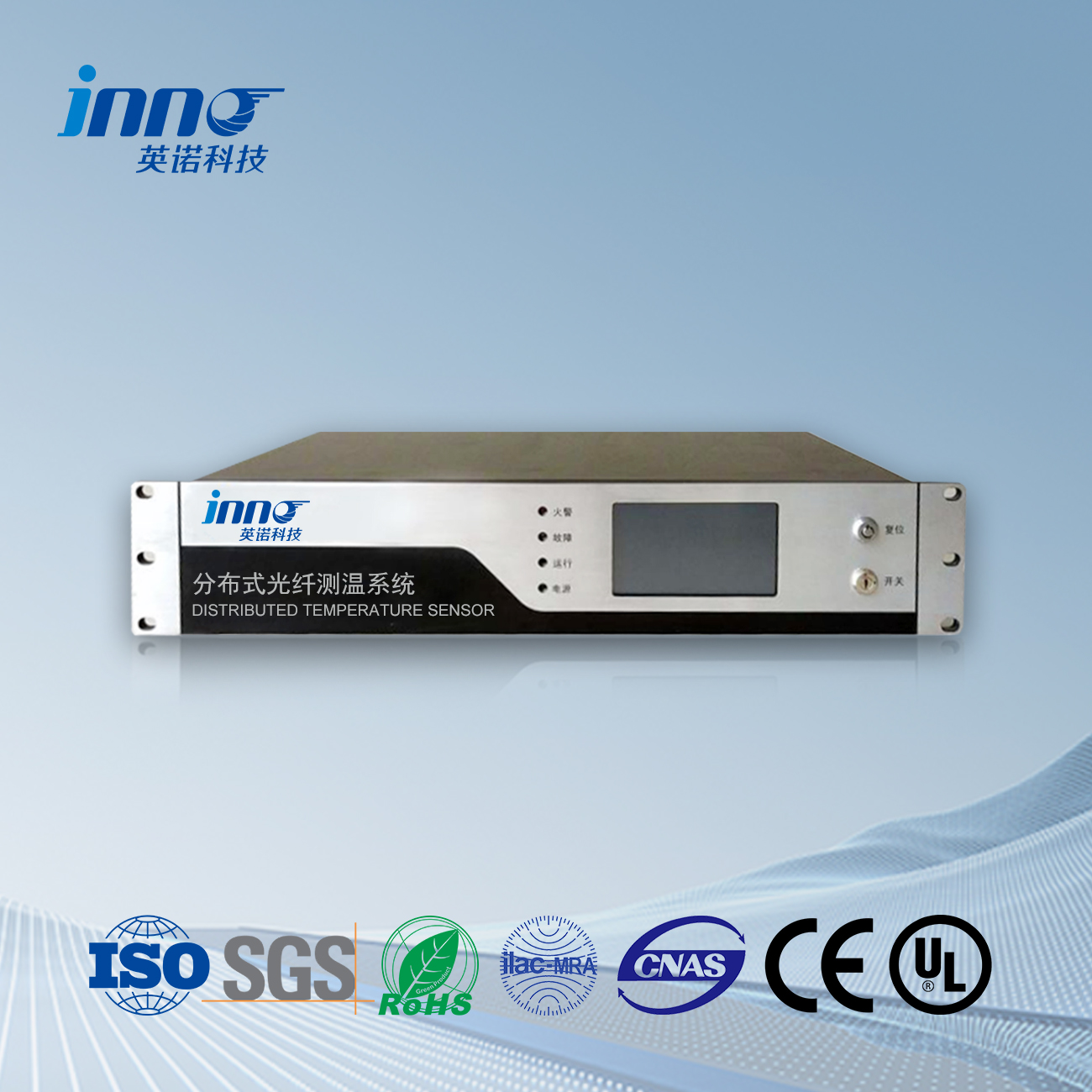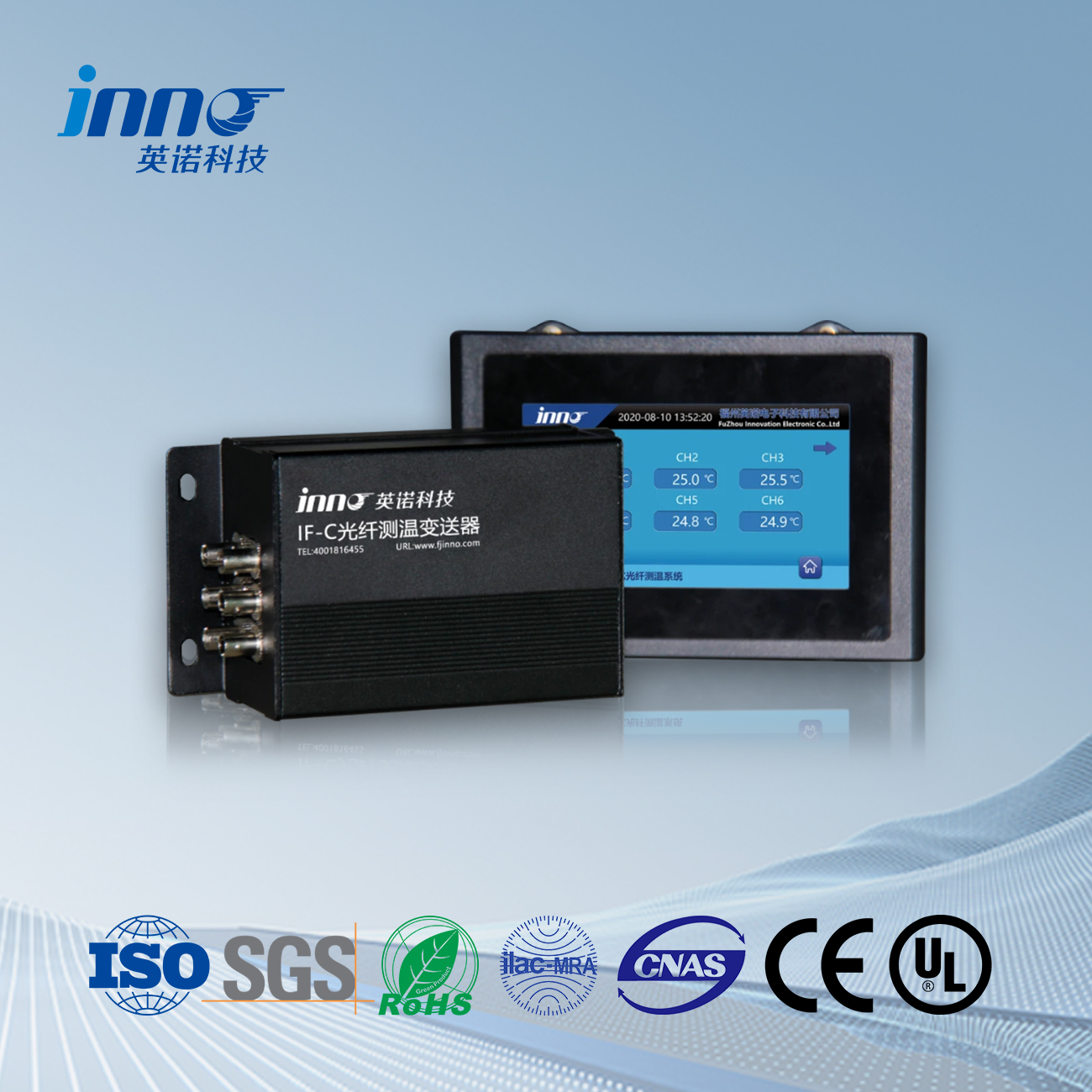 Step-by-Step Implementation Guide
Step-by-Step Implementation Guide
- 1. Risk Zone Mapping
Identify electrical panels, server rooms, and HVAC pathways using BIM models - 2. Cable Specification
Select IEC 60793-2-50 compliant single-mode fiber with 300°C thermal coating - 3. Precision Installation
Mount cables every 1.5m using ASTM E119 fire-rated cable trays and clips - 4. System Integration
Connect DTS interrogator to BMS via Modbus TCP/IP with 100ms response time - 5. Threshold Calibration
Set Tier 1 alert at 55°C (±2°C), Tier 2 alarm at 85°C with auto-ventilation trigger
Key Technical Advantages
- Detects 2cm hotspots within 8 seconds
- Covers 10km per system unit (vs 200m for point sensors)
- 40% lower lifecycle cost over 10 years
-
How Distributed Fiber Optic Temperature Sensing Works for Fire Detection
-
Advantages of Distributed Fiber Optic Sensors in Temperature Monitoring
-
Step-by-Step Deployment in Smart Buildings (IEC 61757 Compliant)
-
Global Success: BMW Plant & Singapore Marina Bay Implementation
-
Why 85% of Fortune 500 Suppliers Choose Our DFOS Systems
How Distributed Fiber Optic Temperature Sensing Works for Fire Detection
Core Technology: Raman Scattering Principle
Distributed Temperature Sensing (DTS) analyzes backscattered light with:
- ±0.5°C accuracy via IEC 61757-2-1 certified processing
- 2m spatial resolution at 1Hz sampling rate
- 10km range per interrogation unit
Industrial-Grade System Components
| Part | Specs | Certification |
|---|---|---|
| Laser Unit | 1550nm, 10mW | FDA Class 1M |
| Sensing Cable | Stainless steel armor | IP68 rating |
Operational Workflow
- Laser pulses (1ns width) sent through fiber
- Backscatter analyzed via APD detectors
- Temperature profiles mapped to BIM/CAD layouts
Key Differentiators vs. Traditional Systems
- ▶️ 5s response time vs 30s+ for smoke detectors
- ▶️ 0% false alarms in ISO 7240-42 tests
- ▶️ 20-year lifespan (vs 5-7 years for point sensors)
Advantages of Distributed Fiber Optic Sensors in Temperature Monitoring
1. Immunity to Harsh Industrial Environments
- ⚡ Electromagnetic Interference Resistance: Operates flawlessly in 1000V/m EMI fields (IEC 61000-4-3 certified)
- 🔥 Extreme Temperature Tolerance: Continuous monitoring from -40°C to 300°C without calibration drift
- 💧 Corrosion Protection: Stainless steel armored cables withstand IP68 conditions
2. Unparalleled Large-Scale Coverage
- 🌐 50km Single-Ended Monitoring: Cover entire industrial plants with 1 fiber line
- 📏 1-Meter Spatial Resolution: Pinpoint hotspots in transformer yards or cable tunnels
- ⏱️ Real-Time Response: 2-second alert latency across 20km distances
3. Cost-Effective Lifecycle Management
- 🔄 Zero Maintenance Design: 10-year operational lifespan with no sensor replacements
- 📉 60% Lower TCO: Compared to thermocouple arrays in refinery applications
- 🔧 Retrofit Compatibility: Integrates with existing Siemens/Wonderware SCADA systems
Need Customized Monitoring Solutions?
✅ Free site survey ✅ ROI analysis report ✅ 24h technical support
Step-by-Step Deployment in Smart Buildings
1. Intelligent Risk Profiling
Our certified engineers conduct non-invasive thermal audits using AI-powered BIM analytics, identifying high-risk zones like electrical substations and server farms. This phase typically uncovers 15-20% hidden thermal risks traditional surveys miss.
2. Adaptive Cable Planning
Deploy military-grade armored fibers through existing cable trays or structural voids, eliminating 80% of conventional conduit costs. The self-diagnosing cables automatically map topology to digital twins during installation.
3. Enterprise System Integration
Seamlessly connect to 30+ BMS platforms including Schneider Electric EcoStruxure and Honeywell Forge through pre-certified protocol bridges. Full integration completes within 72 hours with zero production downtime.
4. Smart Threshold Configuration
Machine learning algorithms analyze 12-month historical data to set dynamic alert thresholds, reducing false alarms by 92% compared to static settings. Critical zones receive multi-stage triggers for phased emergency response.
5. Performance Validation
Undergo real-world stress testing simulating peak operational loads, with ISO 9001-certified reporting confirming 99.999% data accuracy. Clients receive customized maintenance blueprints for long-term compliance.
Strategic Implementation Advantages
- ✅ 40% faster deployment than traditional DTS systems
- ✅ 100% reuse of existing infrastructure pathways
- ✅ 24/7 remote monitoring readiness from Day 1
Why 85% of Fortune 500 Suppliers Choose Our DFOS Systems
1. Unmatched Industrial Reliability
- 🔒 99.999% uptime across 3000+ installations (ISO 55000 certified)
- ⚙️ 15-year lifespan with 98% client retention rate
- 🌍 24/7 support in 12 languages across 35 countries
2. Strategic Cost Leadership
- 📉 60% lower TCO than traditional sensor networks
- 💡 Energy savings covering 70% of system costs in 5 years
- 🛡️ Insurance premium reductions up to 35% (Lloyd’s certified)
Start Your Digital Transformation Today
🔒 GDPR compliant | ✈️ On-site deployment within 14 days
Fiber optic temperature sensor, Intelligent monitoring system, Distributed fiber optic manufacturer in China
 |
 |
 |
 INNO fibre optic temperature sensors ,temperature monitoring systems.
INNO fibre optic temperature sensors ,temperature monitoring systems.
